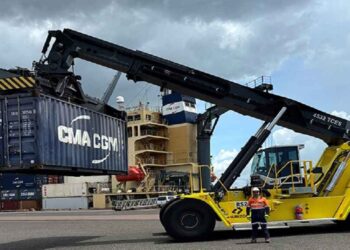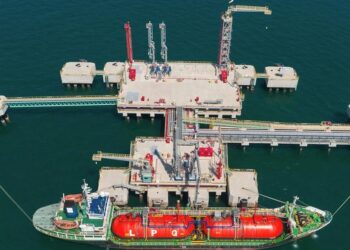Port of Salalah, located on the Gulf of Oman in the Arabian Sea, is undergoing a major expansion to double its general cargo handling capacity. Construction works for the expansion project started in May 2012 and are expected to be completed by mid 2014.
Port of Salalah is the biggest port in Oman, and handled 7.2 million tonnes of general cargo traffic and 3.65 million twenty-foot equivalent units (TEUs) of container traffic in 2012. The ongoing expansion will increase the port’s annual drybulk cargo handling capacity to 20 million tonnes, general goods handling capacity to 140 million tonnes, and liquid cargo handling capacity to six million tonnes.
The port is owned by APM Terminals (30%), Omani government (20%) and institutional and private investors (50%). The port is managed by APM Terminals and is operated by Salalah Port Services Company (S.A.O.G.).
Plans to construct a permanent cruise terminal along with a 6,000m² business incubator space at the port are under consideration.
Details of the Port of Salalah
Port of Salalah became operational in November 1998. It was formerly known as Raysut Harbour or Mina Raysut or Port of Raysut.
The port features a container terminal with seven berths of up to 18m draft and a general cargo terminal (GCT) featuring 12 berths with draft of up to 16m. Both the terminals serve local and regional communities of Oman in particular, and the Middle East in general.
The container terminal covers a total yard area of 765,000m² and is equipped with vessel tracking system. Berths 5 and 6 of the container terminal were inaugurated in 2007 and 2008 respectively.
These GCT berths are 115m to 600m long and situated along with an oil pier. The GCT features seven speed loaders, seven forklifts, 45 rubber tyre gantry cranes, 123 tractors, 158 trailers, three tugs, nine reach stackers and two top loaders.
Port of Salalah has a container freight station (CFS) and other bulk cargo, containers and general and liquid cargoes handling facilities. The CFS became operational in 2002 and manages outbound and inbound cargo transportation at the port.The port also offers bunkering, container repairs, warehousing and ship repair services.
Expansion of Oman’s largest port
This project includes expansion of the general cargo terminal (GCT) and a liquid terminal. It will also involve the construction of additional 1,266m of multipurpose berths, a new Northern breakwater, facilities for dry-bulk commodities and a new liquid jetty.
The concrete quay berths will feature four docks with drafts of 16m to 18m. The berths will be designed to handle vessels with a deadweight capacity of up to 144,000t.
The new liquid jetty facility will increase the port’s efficiency in terms of handling fuels such as methanol, mono ethylene glycol and caustic soda. Dry bulk commodities such as limestone, gypsum and cement and plastics will also be handled at the port.
Expansion also includes dredging of harbour basin, reclamation, protection and paving operations. Several buildings such as substations, fire water pump house, ablution, prayer and cafeteria block will be also constructed.
Contractors involved with the GCT expansion
The Ministry of Transport and Communications (MOTC) of Oman selected Hani Archirodon Construction (Archirodon) for the expansion project in May 2012, under a OMR55m ($143m) contract.
Archirodon will also provide utility services such as potable water supply system, fire protection systems, area drainage and sewerage systems, electrical services and certain miscellaneous works such as fencing, kerb and barriers, and road markings.































